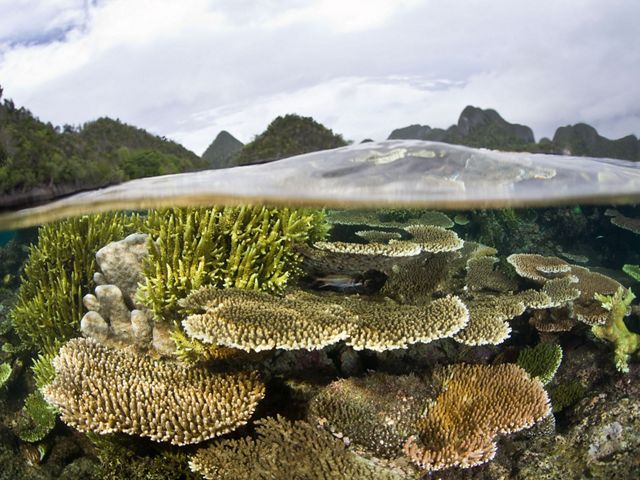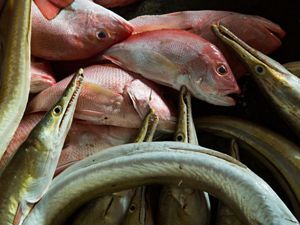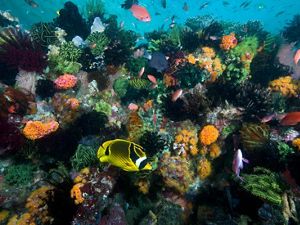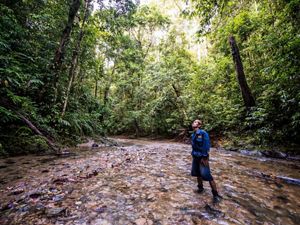Indonesia Oceans and Coasts
Indonesia’s thousands of miles of coastline represent some of the world’s most crucial marine ecosystems.
These coastlines support large fisheries and tourism industries that millions of people depend on for their livelihoods, food and way of life. The Nature Conservancy is working in Indonesia and around the word on ocean protection, restoration and resilience.
TNC is partnering with governments, local people and the private sector from the grassroots to the highest level to help ensure effective management of these vital marine environments by the people and for the people who rely on them.
From laying a foundation for conservation through increased awareness, capacity and community engagement in places such as Raja Ampat, to securing big commitments from Coral Triangle governments for the sustainable management of marine resources across national borders, TNC has helped pave the way for sustainable marine economies, built and guided by the coastal communities that depend on them.

Blue Abadi
At World Ocean Summit 2017, Conservation International, The Nature Conservancy, WWF and the Indonesian government announced $23 million in support of the Blue Abadi Fund, which is on track to be the world’s largest marine conservation trust. The fund is uniquely designed to support local community stewardship of the network of protected areas within Indonesia’s Bird’s Head Seascape.
Located in West Papua, the Bird's Head Seascape encompasses more than 2,500 islands and reefs and supports thousands of species—including 70 that cannot be found anywhere else on Earth. Home to more marine species than anywhere else, this stunning diversity was in peril due to overfishing and destructive fishing practices.
Thankfully, the Seascape’s coral reefs have been saved because of the concerted effort over 12 years of close to 30 partners—the Bird’s Head Seascape Coalition. Together, they built a highly effective, locally managed network of Marine Protected Areas (MPAs) that are generating significant and measurable ecological and social results.
Since the launch of the Coalition, the MPA Network in the Bird’s Head Seascape has grown to include 3.6 million hectares of MPAs, 20 percent of all MPAs in Indonesia. Locally managed by communities and government, the network prioritizes biodiversity conservation and sustainable local fisheries. Working together, they have reduced overfishing by outside poachers by 90 percent while enjoying growth in sustainable fisheries, food security and tourism. Even then, funding is essential for MPA networks to be effective.
Once the Blue Abadi Fund is fully capitalized, the Seascape will contain Indonesia’s first sustainably financed Marine Protected Area (MPA) network. It will provide grants to local communities and agencies so they can sustainably manage their marine resources in perpetuity—“Abadi” means forever in Indonesian.



